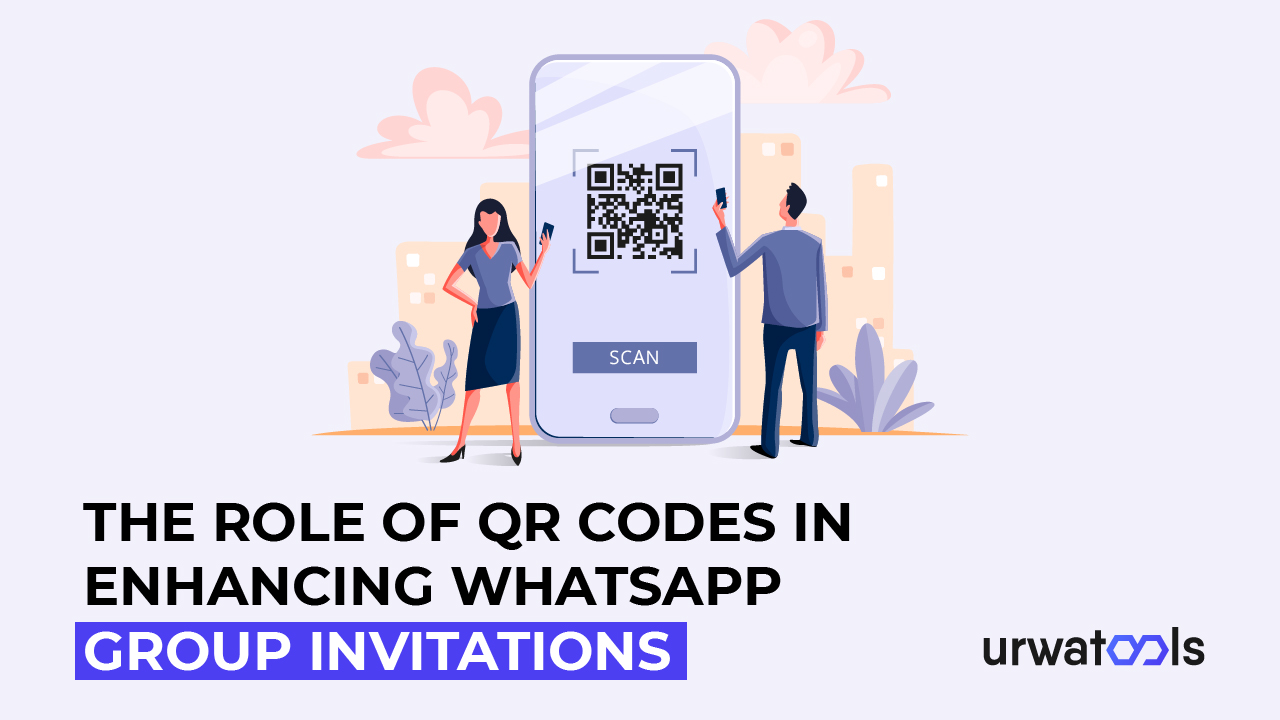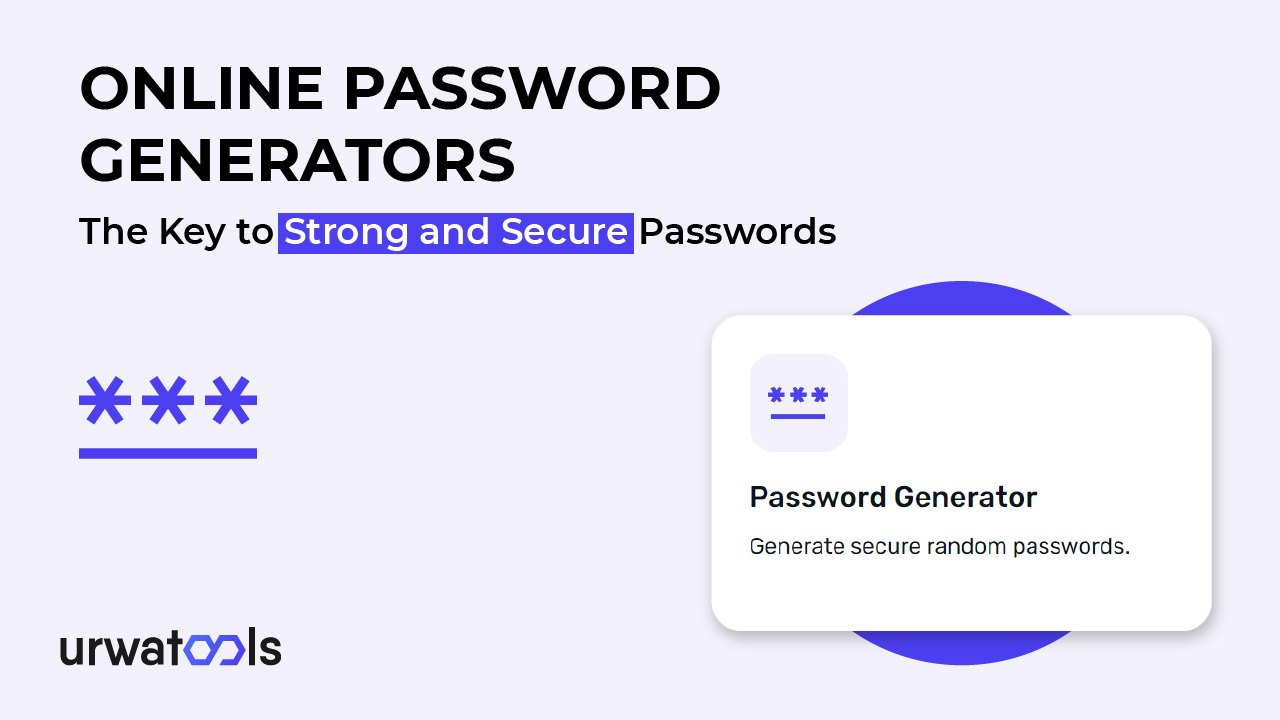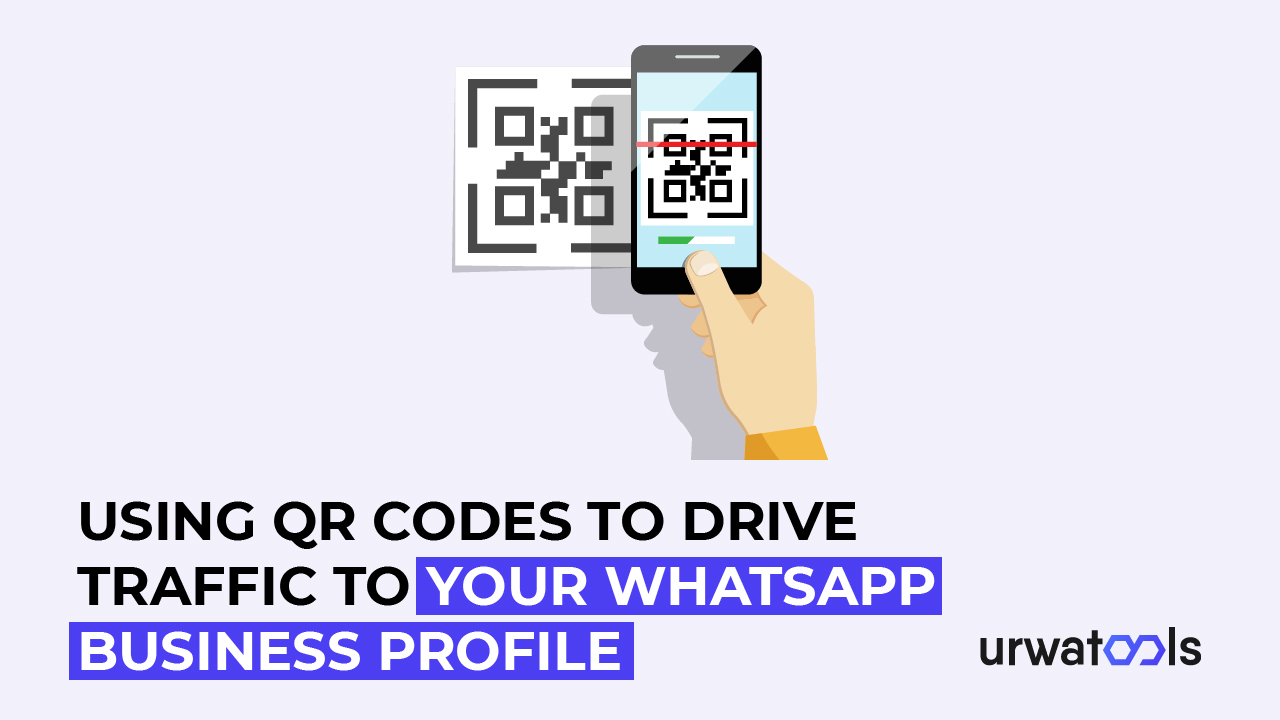Introduction
Communication has advanced swiftly in today's digital era, with messaging apps like WhatsApp playing a crucial part in connecting people worldwide. WhatsApp groups have grown in popularity as a means to connect with people, whether for business, socializing, or organizing events.
However, soliciting others to join these organizations may take time and effort. QR codes come into play here, revolutionizing WhatsApp group invitations and how QR codes may improve WhatsApp group invitations and speed up the process.
What are QR codes?
QR codes are two-dimensional barcodes that contain data in a visually scannable manner. These codes are simple to make and decipher using smartphones with built-in QR code scanners or specialized software. QR codes store data, including website URLs, contact information, and text messages.
Understanding WhatsApp Group Invitations
WhatsApp users may form groups and ask others to join them. Traditionally, group invitations were made by manually adding members by phone number or exchanging group URLs. While these procedures work, they are time-consuming and prone to mistakes. Furthermore, publicly publishing group links might result in unwanted spam or unauthorized access.
The Need for Enhancing WhatsApp Group Invitations
QR codes can enhance the process of inviting users to WhatsApp groups. Let's explore why incorporating QR codes into group invitations is beneficial.
1. Convenience and efficiency:
Group administrators can streamline the invitation process by using QR codes. Administrators may produce a QR code rather than individually adding each member and distributing it to the desired participants. Convenience and efficiency eliminate the need for admins and invitees to add contacts, saving time and effort for both manually.
2. Increased security:
QR codes might help secure WhatsApp group invitations. Unlike public group connections, which everyone may share and view, QR codes can only be shared with certain people. Increased security guarantees that only authorized users may join the group, decreasing the possibility of undesirable individuals joining the chat.
3. Improved user experience:
Using QR codes to invite people to WhatsApp groups provides a smooth and user-friendly experience. Participants may scan the QR code with their cellphones to be routed to the group without further procedures. This shortened approach increases customer satisfaction and encourages more people to participate.
The Role of QR Codes
Let's examine their role in WhatsApp group invitations leveraging QR codes.
1. Generating QR Codes:
Administrators may produce QR codes for their WhatsApp groups by utilizing online QR code generators or specialized applications. These tools enable QR code customization, allowing administrators to add logos, colors, or other branding features to make them more aesthetically appealing and recognizable.
2. Scanning QR Codes:
After generating a QR code, participants may scan it with their smartphone's camera or using a QR code scanning app. This step will immediately link them to the WhatsApp group, where they may join and interact with the community.
Steps to Enhance WhatsApp Group Invitations with QR Codes
To implement QR codes effectively in WhatsApp groups, the following steps should be followed:
1. Creating a QR Code:
The group admin uses a QR code generator to build a QR code by giving the relevant group parameters such as group name, description, and group invite URL.
2. Sharing the QR Code:
The QR code may be distributed to potential group members via various channels, including social networking platforms, email, and printed materials. The administrator can also provide the QR code to interested persons in person.
3. Joining a group with a QR code:
Participants scan the QR code with their devices to join a WhatsApp group. They are sent to WhatsApp after scanning, where they can join the group.
Benefits of QR Codes
Utilizing QR codes in WhatsApp group invitations offers several advantages:
1. Simplified Invitation Process:
QR codes reduce manual contact creation or individual group link distribution. The simplified invitation process streamlines the invitation process, saving group administrators and participants time.
2. Simple and quick joining:
Scanning a QR code is an easy and convenient way to join WhatsApp groups. It eliminates the need for users to type or copy-paste group URLs, resulting in a seamless joining experience.
3. Increased security:
By permitting selective dissemination, QR codes provide secure group invitations. Only people with the QR code may join the group, eliminating unauthorized members from entering or spamming invitations.
4. Tracking and Analytics:
QR codes can be used to track and analyze group invitation success. Admins can monitor the number of scans, conversion rates, and other engagement metrics, enabling them to evaluate the effectiveness of their invitations and make data-driven decisions.
Examples of QR Code Usage
QR codes can be used for WhatsApp group invitations in various scenarios:
1. Business Events and Conferences:
Businesses may use QR codes to invite guests to their events or conferences using WhatsApp. By scanning the QR code, participants may access group discussions, event updates, and networking possibilities.
2. Educational establishments:
Educational institutions can use QR codes to invite students, parents, and faculty to WhatsApp groups. These groups can distribute critical announcements, have academic discussions, or involve students in activities.
3. Social and Community Organisations:
Social and community organizations may use QR codes to welcome like-minded individuals to their WhatsApp groups. Social and Community Organisation allows seamless communication, information exchange, and community networking.
Potential challenges and limitations
While QR codes offer numerous benefits, some challenges and limitations should be considered.
1. Technical Barriers:
Smartphones with working cameras and QR code scanning capabilities are required for QR code scanning. Users with older or lower-end devices may struggle to read QR codes, restricting their accessibility.
2. Adoption and Awareness of Users:
QR codes and the scanning procedure are only known to some users. Proper education and awareness efforts may be necessary to encourage consumers to adopt QR codes for group invitations.
Benefits of QR Codes for WhatsApp Group Invitations
Because of their simplicity and adaptability, QR codes have grown in popularity and widespread use. Regarding improving WhatsApp group invitations, QR codes provide several advantages that simplify the joining process and increase the user experience. In this part, we will examine the main benefits of QR codes for WhatsApp group invitations, emphasizing their use, efficiency, and security.
i. Accessibility and ease of use:
QR codes give a quick and easy way to join WhatsApp groups. QR codes eliminate consumers' need to manually write or exchange lengthy invite URLs. Instead, consumers can scan the code using their smartphones' cameras. Ease of use removes the potential for typos and the time-consuming process of copying and pasting URLs. QR codes' accessibility and ease of use make joining WhatsApp groups a breeze for users of all skill levels.
ii. Efficient Group Joining Process:
One of the key advantages of QR codes for WhatsApp group invitations is that they simplify the membership procedure. Joining a group involved multiple steps, including copying the invite URL, switching to WhatsApp, and pasting the link. By scanning the QR code, users may bypass these time-consuming processes and join the group immediately. This quick procedure saves time and eliminates the friction that could deter consumers from signing up.
iii. Enhancing security and privacy:
QR codes can enhance WhatsApp group invitation security and privacy. If invite URLs are shared, there is a danger of unauthorized access if the link falls into the wrong hands. QR codes reduce this danger by providing a secure link between the invitation and the user's device. Furthermore, QR codes with restricted validity periods can be made. Enhancing security and privacy guarantees that the code expires after a certain time, decreasing the possibility of unauthorized access to the group.
iv. How to Generate QR Codes for WhatsApp Group Invitations:
To fully reap the benefits of QR codes, you must first learn how to produce them for WhatsApp group invitations. Several techniques and tools exist for creating QR codes, each with special instructions and features. Online QR code generators include an easy-to-use interface where you can enter the specifics of the group invitation and quickly produce a QR code. WhatsApp has a built-in QR code capability that allows you to create QR codes within the app.
v. Customizing QR Codes:
While QR codes are useful, they can be customized to match your brand or provide a personal touch. QR codes may be customized by adding logos, colors, or other design components while remaining scannable. Customization creates aesthetically appealing codes that stand out and promote brand awareness. A balance between customization and scannability must be struck to ensure QR code is easily readable by scanning devices.
Best Practices for Implementing QR Codes
Following recommended practices when using QR codes for WhatsApp group invitations is critical. These practices include including a clear call-to-action beside the QR code, giving extra information about the group, testing and confirming the QR codes before extensively disseminating them, monitoring and managing group membership, and successfully advertising them via multiple media. Applying these best practices can improve QR codes' efficacy and provide a smooth user experience.
i. Best Practices for Implementing QR Codes in WhatsApp Group Invitations:
Using QR codes in WhatsApp group invites may dramatically improve user experience and speed up group joining. Recommended practices must be followed to ensure QR codes' usefulness and maximize their advantages. This section will dive into the best practices for using QR codes in WhatsApp group invitations, giving insights and recommendations for successful implementation.
ii. Clear Call-to-Action:
A clear call-to-action alongside the QR code is essential for directing people on how to join the WhatsApp group. Users should understand what action to take when scanning the QR code. For example, a brief instruction such as "Scan the QR code to join the group" might motivate visitors to take the necessary action immediately. By offering a clear call to action, you reduce misunderstandings and boost the likelihood of success in membership.
iii. Providing Additional Information:
While QR codes are an effective group invitation method, including extra information is critical. This material may include a summary of the group's mission, guidelines, or any other pertinent data that prospective members should know. By providing further background, you create reasonable expectations and attract members. It also helps potential members determine the group's relevance and usefulness to their interests or requirements.
iv. Testing and Verifying QR Codes:
It is critical to properly verify QR codes for group invites before widely disseminating them. Testing ensures that the QR codes can be scanned and that the QR codes direct users to the desired WhatsApp group. You may discover and rectify any errors that develop by scanning the codes with various devices and QR code analyzing programs. Verifying QR codes' functionality contributes to a pleasant user experience and eliminates the annoyance caused by incorrect codes.
v. Monitoring and Moderating Group Membership:
Because QR codes make it easier to join WhatsApp groups, monitoring and managing group membership is critical. This practice guarantees that only preferred individuals join the organization and contribute to the community's integrity and purpose. Review and assess new members regularly to ensure they align with the group's aims or criteria. Moderators might use simple screening questions or manual approval processes to preserve group quality and relevance.
vi. Promoting QR Codes Effectively:
It is critical to effectively advertise QR codes for WhatsApp group invitations to maximize their reach and impact. Share QR codes through numerous methods, such as social networking platforms, websites, or offline advertising materials. Encourage current group members to share QR codes with their networks, organically growing their reach. You can boost your chances of recruiting candidates interested in joining the organization by running a complete advertising campaign.
vii. Customization and branding:
While keeping QR codes scannable is critical, customization and branding may provide a personal touch and build a visual link with the group or organization. Consider using your brand's visual identity, such as a logo or colors, while keeping the QR code visible. This customization not only improves the overall aesthetic appeal of the product but also increases brand identification and trust among potential group members.
Following these best practices, you may optimize QR codes for WhatsApp group invitations. Implementing a clear call-to-action, providing additional information, testing and verifying the codes, monitoring group membership, and effectively promoting and customizing the codes will ensure a consistent user experience and increase the likelihood of attracting the right people to your WhatsApp group.
Remember that including QR codes in WhatsApp, group invitations provides simplicity, accessibility, and increased security. By following these best practices, you may successfully use this technology and maximize its benefits for your group communication efforts.
Future Prospects and Trends
QR codes have already transformed how we engage with digital material, and their prospects are bright. QR codes will likely play an increasingly significant role in various businesses as technology advances and consumer behaviors alter. The future possibilities and trends of QR codes. We will highlight their possible uses and technological developments impacting their evolution.
i. Integration with Contactless Payments:
QR code integration with contactless payments is one of the most promising prospects. With the advent of mobile payment systems and the rising use of digital wallets, QR codes can be a secure and easy way to complete transactions. Users may pay instantly from their smartphones by scanning a QR code, removing the need for actual cards or cash. This connection offers new opportunities for frictionless transactions across various industries, including retail, hospitality, and transportation.
ii. Augmented reality experiences:
As augmented reality (AR) becomes popular, QR codes can serve as portals to immersive digital experiences. Users may access AR material such as 3D models, interactive visualizations, and virtual tours by scanning a QR code. Combining QR codes and AR technology opens new marketing, entertainment, and education possibilities. Brands may use QR codes to deliver interesting and memorable experiences, and educational institutions to boost learning through interactive information.
iii. Enhanced tracking and analytics:
Businesses can benefit from QR code tracking and analytics capabilities. We expect developments in QR code technology to increase these capabilities. Using sophisticated analytics solutions, businesses may obtain enhanced insights into consumer behavior, engagement patterns, and conversion rates. This data is useful to improve marketing campaigns, personalize user experiences, and improve corporate processes. QR codes will remain effective tools for data-driven decision-making.
iv. Integration with the Internet of Things (IoT):
With the fast Internet of Things (IoT) growth, QR codes may become essential to IoT ecosystems. QR codes can enable seamless interaction between devices and people by connecting actual items to digital information. FOR EXAMPLE, a QR code on product packaging might give precise information about the product's origin, ingredients, or usage instructions. Users may also interact with smart devices by scanning QR codes, such as connecting to a Wi-Fi network or controlling IoT-enabled appliances.
v. Sustainability and green initiatives:
QR codes can help with sustainability and environmental projects. QR codes can replace traditionally printed papers as firms attempt to decrease paper waste and implement eco-friendly practices. Instead of paper brochures or menus, businesses might use QR codes that link to digital equivalents. Sustainability and green initiatives decrease paper use and encourage a more environmentally friendly approach to knowledge exchange. QR codes can also provide mobile ticketing and digital receipts, reducing paper consumption even more.
vi. Advancements in Design and Aesthetics:
We anticipate developments in QR code design and aesthetics in the future. While QR codes are practical, attempts are being made to make them visually appealing and incorporate them seamlessly into other design aspects. Advances in QR code technology will provide more customization choices, such as embedding logos, colors, and patterns without affecting scannability. Advancements in design and aesthetics will increase QR code usage and acceptability across sectors and customer categories.
Conclusion
QR codes are essential for improving WhatsApp group invitations. They provide convenience, enhanced security, and a more convenient user experience. Admins and members may streamline the invitation process and create a more engaging and secure group environment by following easy steps to produce, share, and scan QR codes.
FAQs
Q1. Can anyone join a WhatsApp group by scanning the QR code?
A: Only QR code users can join the WhatsApp group.
Q2. Are QR codes compatible with all smartphones?
A: Most modern smartphones have QR code scanning capabilities. However, some older or lower-end devices may need this feature.
Q3. Can I customize the QR codes' appearance?
A: Yes, various QR code generators allow customization options, such as adding logos, colors, or other branding elements to the QR code.
Q4. How can I track QR code invitation success?
A: QR code generators and specialized analytics tools provide insights into metrics such as scans, conversion rates, and user engagement.
Q5. Can I use QR codes for WhatsApp group invitations without an internet connection?
A: Once the QR code is generated, it can be shared and scanned offline without an internet connection.







